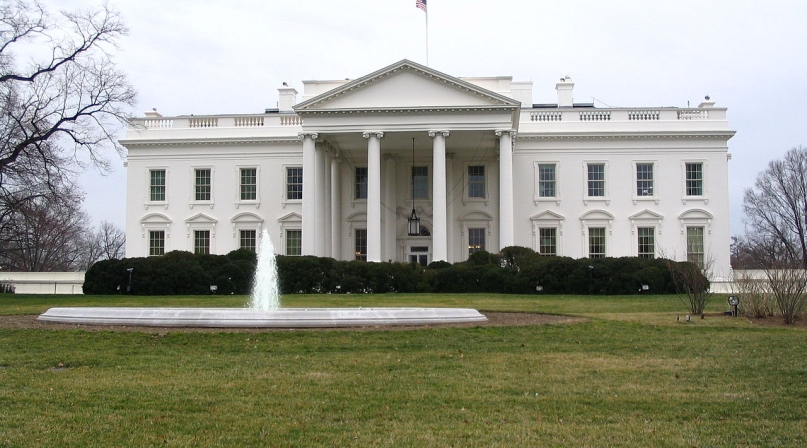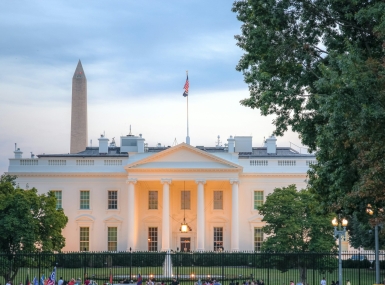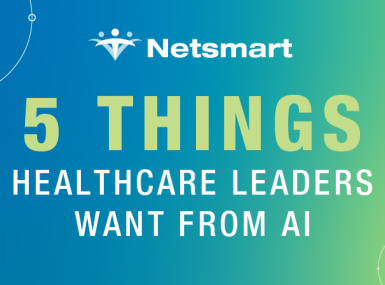White House releases AI Action Plan: What it means for counties
Author

Seamus Dowdall
Upcoming Events
Related News

Key Takeaways
On July 23, the White House released America’s AI Action Plan, a national framework to guide artificial intelligence (AI) infrastructure initiatives and federal policymaking across a range of priority areas. The AI Action Plan was a directive from Executive Order 14179, titled Removing Barriers to American Leadership in Artificial Intelligence, and the plan details the administration’s approach to fostering the development and growth of the AI sector.
Counties recognize the pivotal role that artificial intelligence is playing in the growth of the American economy, and are carefully integrating AI into public services. Counties must have a meaningful consultative role in shaping how AI policies affect local communities. As the implementers of many federal programs and the providers of essential local services, counties have unique expertise in understanding both the opportunities and challenges of AI deployment at the local level.
Counties look forward to working as intergovernmental partners to build AI infrastructure, develop a workforce skilled in AI and ensure cybersecurity is top of mind as we leverage AI to support our residents and strengthen our communities.
What does the AI Action Plan include?
The White House’s AI Action Plan contains a host of policy recommendations across three pillars:
- Accelerate AI Innovation
- Build American AI Infrastructure
- Lead in International AI Diplomacy and Security
Each pillar includes a range of directives to federal agencies to enact policymaking in areas that include data center construction, supporting workforce and education initiatives, strengthening cybersecurity and supply chain resiliency, and promoting open-source AI technologies and adoption, among other areas. A summary of key areas pertaining to counties can be found in the sections below.
Expediting data center construction
The plan includes making federal lands available for data center construction and power generation infrastructure for these centers, by instructing federal agencies with large federal lands portfolios to identify suitable sites. On July 24, the Department of Energy (DOE) announced the identification of four sites which will proceed to invite private partners to develop data center and energy generation projects. The selected sites include the Idaho National Laboratory, the Oak Ridge Reservation, the Paducah Gaseous Diffusion Plant and the Savannah River Side.
The AI Action Plan also establishes new categorical exclusions under the National Environmental Policy Act (NEPA) for data center-related activities that normally do not have a significant impact on the environment. The plan also calls for utilizing the FAST-41 process to cover all data center and data center energy projects eligible under the Fixing America’s Surface Transportation Act of 2015. Furthermore, it explores the need for a nationwide Clean Water Act Section 404 permit, and if adopted, ensures the permit would remove the requirement of a Pre-Construction Notification.
Counties continue to urge Congress to pass legislation that respects local authority to regulate, ban or restrict data centers in communities based on local choice and input. Counties further urge the Department of Energy and other relevant agencies to engage in meaningful consultation with public lands counties on the implications of new data center construction on federal lands.
Evaluating current federal and state enforcement of regulations pertaining to AI
The plan involves directing the Federal Communications Commission (FCC) to identify any state AI laws or regulations that may be in violation of the Communications Act of 1934. Additionally, the plan calls for a review of all Federal Trade Commission (FTC) investigations commenced to ensure that they do not advance theories of liability that unduly burden AI innovation, and it orders a review of all FTC final orders, consent decrees, and injunctions, with the aim of modifying or setting aside any that unduly burden AI innovation where appropriate.
Counties have previously advocated against efforts to place moratoriums or restrictions on state and local AI policies and regulations. Counties urge the FCC to respect state and local lawmaking authorities in areas not expressly restricted by federal law. Counties further urge the FTC to retain discretion insofar as current law permits to protect consumers against the harms and dangers of the malicious use of AI and generative AI.
Promoting workforce development and education for AI
The plan includes the integration of AI skill development into relevant federal education and workforce funding streams, led by the U.S. Department of Labor (DOL), U.S. Department of Education (Ed), National Science Foundation (NSF), and U.S. Department of Commerce (DOC). It also orders the U.S. Department of Treasury (DOT) to issue clarifying guidance that AI literacy and skills development may qualify as eligible educational assistance under Section 132 of the Internal Revenue Code governing fringe benefits for employees.
Additionally, the plan establishes the AI Workforce Resource Hub under the DOL to evaluate the impact of AI on the labor market and generate actionable insights to inform workforce and education policy. The plan also greenlights new pilots for approaching workforce challenges presented by AI under existing authorities granted by the Workforce Innovation and Opportunities Act and the Public Works and Economic Development Act.
Furthermore, the plan permits the DOL to leverage discretionary funds to fund rapid retraining for individuals impacted by AI-related job displacement and issues clarifying guidance to states on how to identify eligible dislocated workers in sectors undergoing significant change tied to AI adoption.
Counties support meaningful education and workforce development initiatives that improve AI skilling and literacy and welcome opportunities for intergovernmental partnership to advance these objectives.
Strengthening cybersecurity best practices and supply chain resiliency for AI
The plan includes establishing an AI Information Sharing and Analysis Center (AI-ISAC), led by the U.S. Department of Homeland Security (DHS), to promote AI-security threat information and intelligence among critical infrastructure sectors, including local government. The information-sharing analysis center model builds on previous iterations of ISACs that have covered cybersecurity and elections assistance in the past.
Furthermore, the plan calls on DOC through the National Telecommunications and Information Administration (NTIA), to convene industry and government stakeholders to identify supply chain challenges to American robotics and drone manufacturing.
Counties strongly support local government participation in the newly-formed AI-ISAC, as increased intergovernmental coordination will ensure cybersecurity readiness in the public sector as AI continues to evolve.
What is the county impact?
The AI Action Plan touches on a range of policy issues that are of interest to counties, including that:
- Counties have a vested interest in ensuring local authorities are consulted through all land use decisions
- Counties support education and workforce programs that address the growing need for AI literacy and skills development in different sectors of the labor market.
- Counties strongly support the initiative to strengthen cybersecurity systems and support county participation in the newly-formed AI-ISAC.
- Counties support open-source adoption of AI and other governance initiatives that seek to maximize the security and safety of AI tool integration into the public sector.
NACo will closely monitor federal developments as federal agencies begin to carry out the orders of the AI Action Plan.
Resource
AI County Compass: A Comprehensive Toolkit for Local Governance and Implementation of Artificial Intelligence

Related News

House committee passes local broadband permitting preemption bills
The American Broadband Deployment Act of 2025 would enact new restrictions on a variety of state and local land use and zoning authorities pertaining to the deployment of telecommunications infrastructure.

White House signs Executive Order on state AI lawmaking
President Trump signed an Executive Order (EO) aimed at mobilizing federal agencies to challenge existing state laws on artificial intelligence.
